How to Burn Fat While Building Muscle | Nutrition to Build and Burn | Hack Your Workouts to Build and Burn | Supplements to Build and Burn
Getting big is one thing. Getting lean is another. And the two simply don’t happen at the same time—or so the commenters would have you believe.
I’ve worked with plenty of bodybuilders and strength athletes who needed to hold onto muscle—or even build it—while also burning fat. And I’ve seen them do it. But it didn’t happen by accident or by shortcuts, it was a question of making the right choices over and over again for a long time.
To be clear, everything here assumes that the basics are in place: You’re eating adequate calories and protein and your training is in line with the goal of burning fat while building muscle.
Got that? Then here’s how you should eat, from the training trenches straight to the stage—or just to your selfie.
Keep Your Caloric Deficit Moderate
You can’t ignore or cheat calories. But that also doesn’t mean you should go as low as possible. Use a calorie calculator to place yourself in a slight deficit—usually no more than 300 calories—to drive weight loss. Aim to lose 0.5-1.0 pounds per week, and no more. Keep it slow to keep your gains!
Be Aware of Your Carbohydrates
No, I didn’t say “beware of carbs.” But if you want to build and burn at the same time, I wouldn’t advise consuming carbs when you don’t need them!
The best times to give yourself larger portions of carbs is before and after workouts. This is when they can power your workouts and get burned off. The rest of the time, limit yourself to no more than 25-35 grams in other meals, and make them high-fiber, vegetable-based carbs.
Don’t Consume Large Amounts of Fat and Carbs Together
This is somewhat controversial in sports nutrition, but there’s evidence that combining carbs and fats in great quantities creates an insulin response that makes your calories more likely to end up as body fat—and you more likely to crave the same combo like a drug afterward.
Again, it doesn’t mean not to eat either macronutrient, just don’t eat them together in huge amounts on a regular basis. A few grams of healthy fats with complex carbs are just fine.

My recommended limit is around 15-20 grams of fat for every 50 grams of carbs eaten at a sitting—or around 1 sweet potato with 1/2 of an avocado. This assumes you always eat a solid amount of protein at every meal, of course!
Eat Protein Before Bed
Athletes need more protein than non-athletes. People who are dieting need more protein than people who aren’t. Athletes who are dieting… see where this is going?
I’m not going to give you a specific number—that’s what calculators are for. Suffice it to say, plenty of people in this position end up feeling like they’re chasing protein all day. That’s when it’s helpful to use that old bodybuilder tradition of having casein protein before bed.
The science on this technique is solid. It boosts muscle mass and strength gains, but also improves workout recovery. And as researcher Dr. Bill Campbell has shown in research with female physique athletes, extra protein doesn’t get stored as fat. It’s about as close to free calories (and free gains) as you can get.
Keep it simple. Around 45-60 minutes before bed, eat 1-1.5 cups of cottage cheese (2% fat or less) or a scoop of casein in a shake or protein puddling.
Bedtime just got a lot more appetizing. Have protein at night to boost muscle gains while you sleep!*
Eat Citrus Fruits
Lots of people hear “control your carbs” and think “cut out all fruit.” Not me! Citrus fruits are great because they are acidic and raise insulin less than most typical fruits (with the exception of pineapple). Plus, they contain polyphenols such as naringin, found in oranges and grapefruit, which can help with fat loss by extending caffeine’s effects.
Take caution eating grapefruit with prescription meds, however, as it may have negative side effects. Kiwi, mango, and strawberries also fit the bill as good low-insulin fruits.

Refeed Rather Than Cheat
When calories get low, there’s almost always a moment when you really feel like you’re hungry all the time and weight loss is not keeping up. When this happens, it’s time for a “refeed.” It’s not to be confused with a “cheat meal,” which is one of those carb-and-fat bloodbaths I warned about earlier.
A refeed is just a single high-carb meal, often double or triple what you’d eat in a sitting. Especially when eaten 2-3 hours before bed, this approach raises levels of the appetite-controlling hormone leptin, and also heads off metabolic slow-down. Plenty of people consider this the key to successful dieting.
Let’s be clear about one thing, though: It still only works if you’re consistent with what you do the rest of the week. And before you reach for that bag of sugar, I’ll add that I still like to focus on slow or medium-digesting carbs for a refeed.
*Creatine while cutting? Yep! It’s been shown to help maintain strength and muscle while dieting. Take 5 grans per day, every day. **













